Boryeong Beach Special Tourist Zone (보령 해수욕장 관광특구)
8.5Km 2021-07-13
Boryeong-si, Chungcheongnam-do
+82-41-932-2023
The Boryeong Beach Special Tourist Zone consists of three major attractions: Daecheon Beach, Muchangpo Beach and Jukdo Island.
The 3.5-kilometer-long, 100-meter-wide Daecheon Beach is popular as the main venue for the annual Boryeong Mud Festival, which attracts about 2 million domestic and international tourists every year. The soft, white sand and lush pine trees also make this an ideal beach to visit for a walk. Various accommodations can easily be found here since the area has been a popular tourist destination for quite some time.
Located south of Daecheon Beach, Muchangpo Beach is where visitors can witness a sea-parting phenomenon in the summer. The 1.5-kilometer “Mystic Sea Road” between Muchangpo Beach and Seokdaedo Island reveals itself when the water levels go down due to the difference in the ebb and flow of the tides. During the sea parting, visitors will be able to catch clams, crabs and shellfish. The beach also offers a breathtaking view of the sunset.
Jukdo Island is located midway between Daecheon Beach and Muchangpo Beach. This unpopulated fishing island is known for its dense groves of bamboo trees. The waters in front of the island are clean and full of fish, drawing a large number of visitors for sea fishing.
Kimgane Jeontong Sagol Sujebi (김가네 전통사골수제비)
9.1Km 2024-02-21
57 Seokseo 1-gil, Boryeong-si, Chungcheongnam-do
041-934-4706
Kimgane Jeontong Sagol Sujebi is a sujebi (hand-pulled dough soup) specialty restaurant near Daecheon Beach. With over 50 years of tradition, the restaurant is renowned for its deep-flavored broth. The menu includes sagol sujebi (beef bone soup with hand-pulled dough), dogani sujebi (hand-pulled dough soup with ox knee), and kimchi sujebi (hand-pulled dough soup with kimchi). Sujebi is made by kneading flour and tearing it by hand into wide strips, which are then boiled with various ingredients. The chewy texture of the noodles varies slightly depending on the ingredients added.
Ziptrek Korea (대천 짚트랙)
9.3Km 2025-10-27
80 Haesuyokjang 10-gil, Boryeong-si, Chungcheongnam-do
The zip track of the course, which glides slightly over the sea in Daecheon from the 19-story tower with a x_height of 52m, perfectly satisfies the desire to fly. Actors Park Bogum and Kim Youjung experienced this in 'Youth MT'. Thanks to the line installed along the coast, you can see downtown Daecheon on the right at the beginning and fly over the sea from the middle to the end, which is even more fun. The cart ride on the way back is another 'fun' point, and it takes about 10 minutes to get back to the tower. There is also a cafe in the observatory one floor above the boarding area, so it is good to enjoy the scenery from an open point of view.
Ziptrek Korea (짚트랙 코리아)
9.3Km 2024-04-01
79 Haesuyokjang 10-gil, Boryeong-si, Chungcheongnam-do
At Ziptrek Korea, visitors can enjoy a refreshing ziptrek activity at Daecheon Beach. Ziptrek Korea's ziptrek course departs from the x_height of a 19-story building and takes riders over the sea water, offering an open view of the West Sea. Visitors must purchase a ticket at the ticket office on the first floor and wear safety gear. Then, they can go up to the deck after wearing a safety helmet and seat belt. Afterwards, brief training and safety precautions take place before the activity. After going down the zipline, visitors can return to the ticket office by taking a 10-minute cart ride. There's is a observatory cafe at the departure for enjoying the scenery for those who are not thrill-seekers.
Hongwonhang Port (홍원항)
9.4Km 2021-08-12
130-3, Hongwon-gil, Seocheon-gun, Chungcheongnam-do
+82-41-952-9525
Hongwonhang Port, located near Chunjangdae Beach, is a popular place for enjoying sea fishing and delectable meals of fresh raw fish. In addition to its culinary appeal, the port offers the picturesque scene of long stretches of shoreline guarded by two beacons in red and white. Hongwonhang Port has many fishing boats thanks to its small tidal range, resulting in a lively atmosphere and cheap sashimi prices.
Hongwonhang Port, along with Gwangyanghang Port in Jeollanam-do, is the prime spot for gizzard shad. Each autumn the port holds the Gizzard Shad Festival, a festival that has plenty of events & delectable fish dishes. While at the festival, visitors are also encouraged to check out the Seocheon Museum of Marine & Natural History and Dongbaekjeong. The stuffed specimens at the museum are worth the visit and the view of Maryang Port from atop the museum is unbelievable.
Daecheon Port (대천항)
10.0Km 2024-02-21
2245 Sinheuk-dong, Boryeong-si, Chungcheongnam-do
Daecheon Port serves as a pivotal point for maritime transportation and a base for fishing in Boryeong. At the fish market, visitors can explore and purchase various seafood caught in the Hwanghae Sea, including fish, blue crabs, and shrimp. The early morning auctions are also a sight to behold. The coastal passenger terminal operates ferries to islands near Boryeong, such as Sapsido Island.
Seosan Hoegwan (서산회관)
10.4Km 2024-02-22
318 Seoin-ro, Seo-myeon, Seocheon-gun, Chungcheongnam-do
041-951-7677
Seosan Hoegwan is a webfoot octopus specialty restaurant located right in front of the tidal flats. The webfoot octopus caught here, using conch shells to attract them, is exceptionally fresh and flavorful. Popular dishes include jukkumi cheolpan bokkeum (stir-fried webfoot octopus on hot iron plate) and jukkumi shabu shabu (webfoot octopus shabu-shabu) with the peak season lasting from February to early May. Additionally, various seafood dishes such as ureoktang (spicy rockfish stew), kkotgetang (spicy blue crab stew), and nakji tangtangi (chopped live octopus) are available. Nearby attractions include Seocheon Coastal Glamping Site and the beach.
Ongmasan Mountain (옥마산)
11.5Km 2024-06-03
300 Changdong 1-gil, Nampo-myeon, Boryeong-si, Chungcheongnam-do
Ongmasan Mountain is located in the southern part of Boryeong with its highest point reaching 601 meters above sea level. Although the mountain encompasses the areas of Myeongcheon-dong and Nampo-myeon, it can easily be identified due to the transmission tower installed at the peak. The mountain's name is said to have derived from the legend of the last king of the Silla period and his horse that was hit with a jade arrow. The mountain has a paragliding center and a pine forest with rest spots. At the northern section of the summit, there is a pavilion that offers an excellent vista and Daeyeongsa Temple, renowned for its beautiful cherry blossoms in spring. Ongmasan Mountain can be reached by taking the National Roads 21 and 40, and other regional highways as well as expressways. Nearby attractions include Boryeong Mugunghwa Arboretum, Seongjusan Mountain, Seongjusan Recreational Forest, Boryeong Coal Museum, and Gaehwa Herb Land.
Seocheon Maryang-ri Camellia Forest (서천 마량리 동백나무 숲)
11.7Km 2022-12-26
103, Seoin-ro 235beon-gil, Seocheon-gun, Chungcheongnam-do
+82-41-952-7999
One of the eight scenic views of Seocheon, Maryang-ri Camellia Forest is designated as a Natural Monument. The lush forest covers an area of 8,265 ㎡ with the trees being nearly 500 years old. The best time to enjoy the camellias is from late March to early May. Dongbaekjeong Pavilion standing at the peak of the hill offers a beautiful view of the nearby Oryeokdo Island in the blue sea and is also a prime spot for taking in the sunset.
The western side of the forest has few remaining trees, but the eastern side is still lush with over 70 trees. While camellia trees typically grow to be 7 meters tall, the strong sea breeze has caused the trees in this forest to have a stunted growth of just 2 meters, as well as growing at a slant.
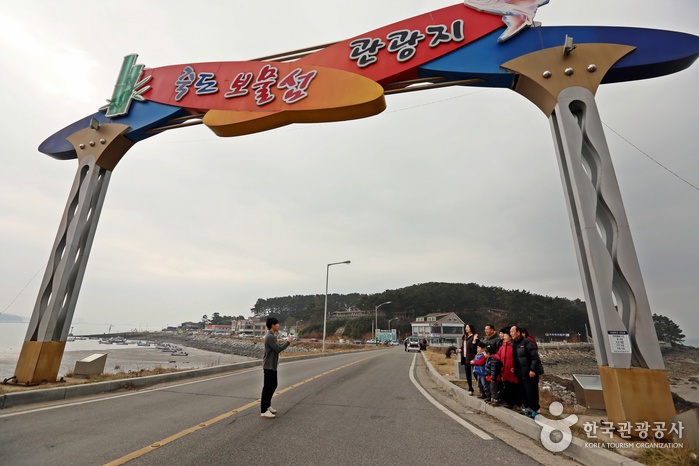
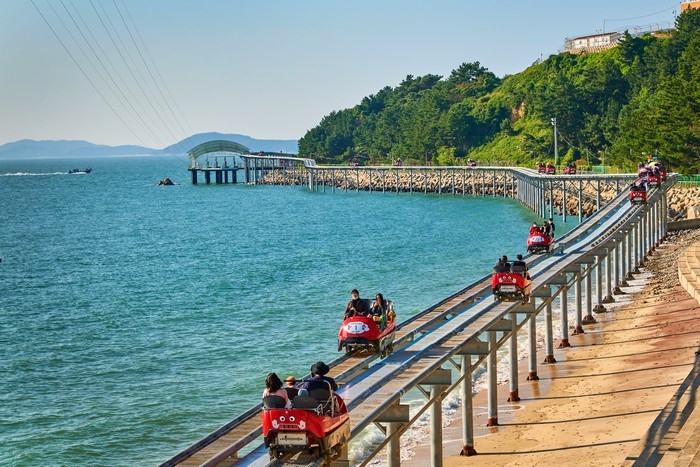

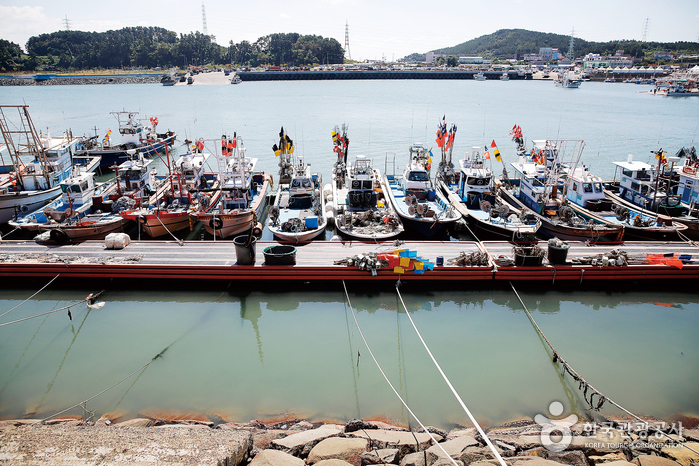

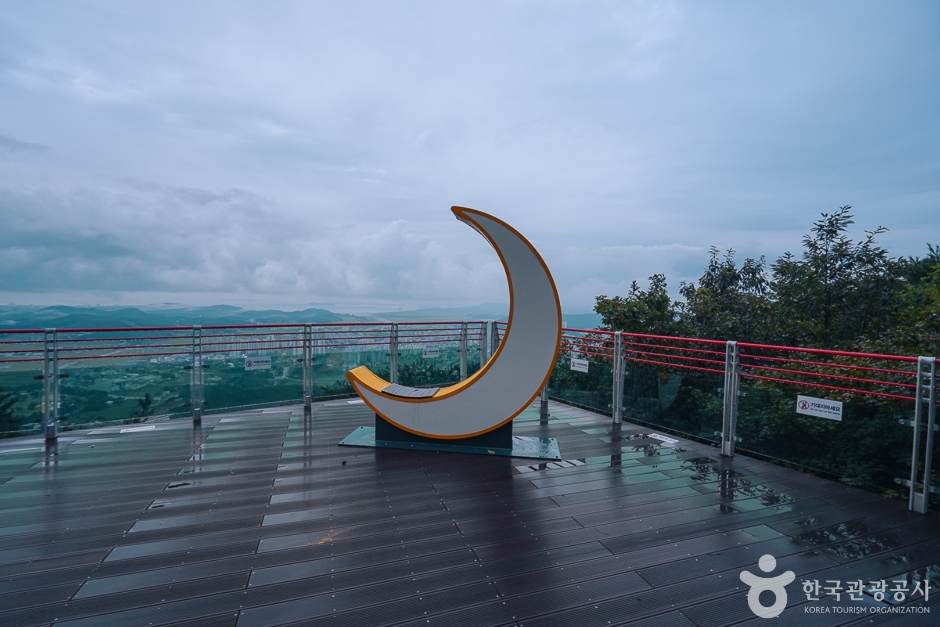
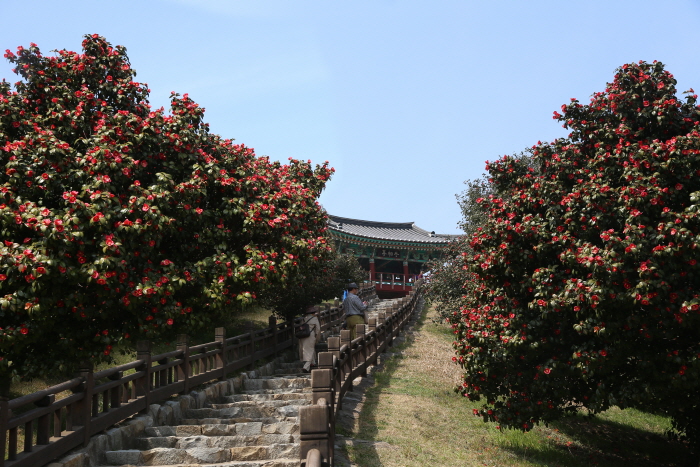
![Tonymoly [Tax Refund Shop] (토니모리)](http://tong.visitkorea.or.kr/cms/resource/22/2883522_image2_1.jpg)
 English
English
 한국어
한국어 日本語
日本語 中文(简体)
中文(简体) Deutsch
Deutsch Français
Français Español
Español Русский
Русский